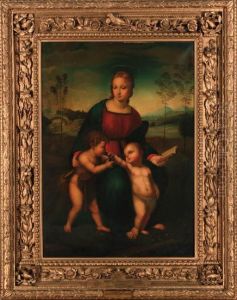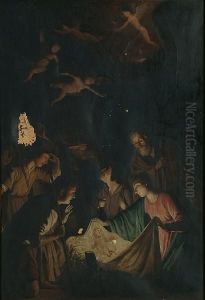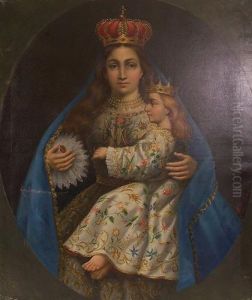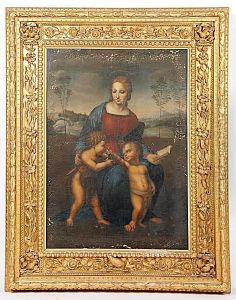Leopoldo Galli Paintings
Leopoldo Galli was an Italian painter, known for his contributions to the world of art in the late 19th and early 20th centuries. Born in 1861 in Rome, Italy, Galli was part of the vibrant Italian art scene that was influenced by various artistic movements of the time, including Romanticism, Impressionism, and later, Modernism. His early life was marked by a deep immersion in the rich cultural and historical heritage of Rome, which would later influence his artistic direction.
Galli studied art at the Accademia di Belle Arti di Roma, where he was mentored by some of the most prominent Italian artists of his time. His education grounded him in the classical traditions of Italian art, but Galli was also influenced by the changing currents of European art, particularly the work of the Impressionists. He developed a style that while rooted in the classical tradition, also embraced the light and color that characterized the new wave of European art.
Throughout his career, Galli focused on landscapes, portraits, and historical scenes. His landscapes, often of the Italian countryside and its ancient ruins, are noted for their vibrant color and light, capturing the essence of the Italian landscape with a mix of realism and impressionistic sensitivity. His portraits, on the other hand, are appreciated for their depth of character and psychological insight, reflecting the inner life of his subjects with sensitivity and nuance.
Galli's work was widely exhibited in Italy and abroad, earning him a reputation as a significant figure in the Italian art world. He was also a member of several art societies and participated in important national and international exhibitions. Despite his success, Galli always remained deeply connected to his Roman roots, drawing inspiration from its history, its people, and its landscapes.
Leopoldo Galli passed away in 1938, leaving behind a legacy of art that continues to be appreciated for its beauty and depth. His contributions to Italian art are remembered for their blend of classical beauty and modern sensibility, making him a bridge between the old and the new in the evolution of Italian painting.



